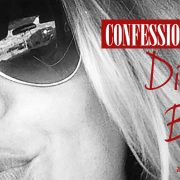Confessions of a Dirty Blonde :: Got mind traffic? Let’s decongest.
My brain is a twelve-lane highway. Sometimes, if I’m lucky, the congestion isn’t bad and ideas are free to travel at their own pace, moving beyond the spray-paint graffiti on medians and overpasses.
But other times, which are more frequent the longer I write, rush hour gridlocks my neural pathways. It’s the antithesis of writer’s block – the most ironic form – when I can’t focus on one idea because I have too many.
We writers are the walking definition of a conundrum: we’re empty if can’t write because ideas aren’t coming and we’re swallowed when they do.
The good news? The overwhelming, inexplicable-to-non-writers stoppage can be dissolved with patience and effort.
Let’s do this.
Step one: Focus on only the lanes ideas headed in the same direction you’re going.
No need to pay attention to southbound lanes when you’re heading north. If you know an idea is there, but no end is in sight (because you’d have to turn around), let it go. Focus first on the ideas that don’t make you change your route.
The good news is you have plenty to work with that are also working with you. And you also cut your brain traffic in half.
It’s not easy. But I do have strategies for you:
- That notebook you’re supposed to carry at all times? Get it out and write the ideas you’re not focusing on.
- Then put it away without fearing they’ll never resurface. Your ideas get out of your head and on the page, easy to come back to when you need them.
- If the ideas scream at you, reassure them you’ll come back. I’m not kidding. Say something like, “I hear you, brilliant sci-fi opening #1, but I have to focus on this right now. Can you please stay quiet until I’m ready? I’ll come back. Promise.”
It works. Acknowledging a thought and asking it to step aside genuinely releases it. I once went to a therapist because I was so stressed out about every damn detail in my life. This is the activity she made me do. And we did it with feelings, events and ideas. I should have asked her for the technical term, so when I suggested it to others they’d know I wasn’t making it up.
You can try it or not. If you don’t, though, you’re still going to have all twelve lanes keeping you distracted without any progress. Seems like it’s worth a shot when you look at it that way, doesn’t it?
Step two: Ease off the brakes.
You’ve cut out half of your problem and now the rest of your thoughts are options for your next writing session. Perfect. So stop holding down the brake and let your ideas move around. Just like real-life rush hour, the person who waits for a gap to zoom up on the next car’s ass actually clogs the highway. If everyone would slowly continue moving, nobody would ever need to stop.
Ask yourself what pace you need to move that day, then choose your lane accordingly.
Drive. Be mindful of your surroundings, but do NOT change lanes. There are other days and other opportunities for you to take a different path. If you’re so focused on which one you should choose, you’re never going to choose anything. And since you’ve already cut ideas from tip #1, focus should come easier.
Step three: Drive Write every day.
Thirty minutes is the minimum, but you already knew that. Dedicating time to writing every day also relieves you of the anxiety associated with not knowing when you’ll get your thoughts out. If you commit to this, you know you have the next day to continue working.
You’ll reevaluate what needs to be done (by practicing the first two steps) and continue moving forward at a much faster pace than if you didn’t clear the congestion and commit to your craft.
***
Got writing questions for Capo? Email capo@rebeccatdickson.com. Confessions of a Dirty Blonde goes out every Thursday.





Need to remember this recently and sharing with others who I know need it too! Thanks Capo!